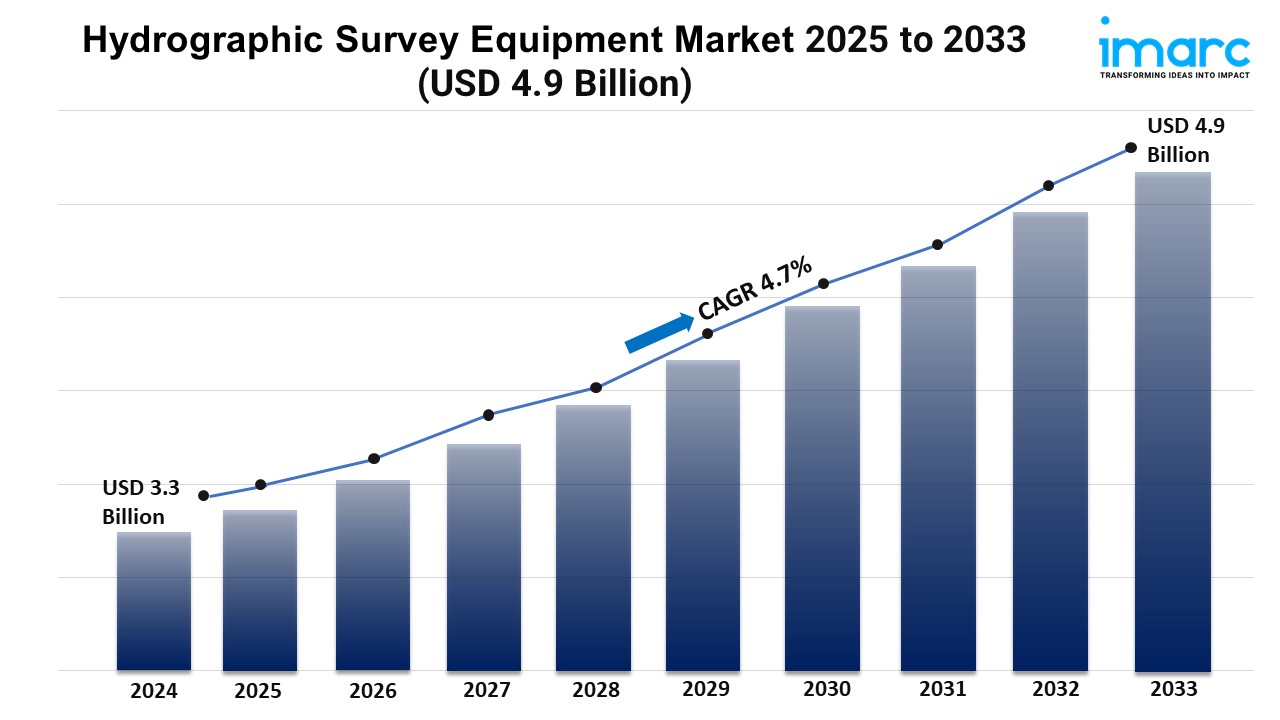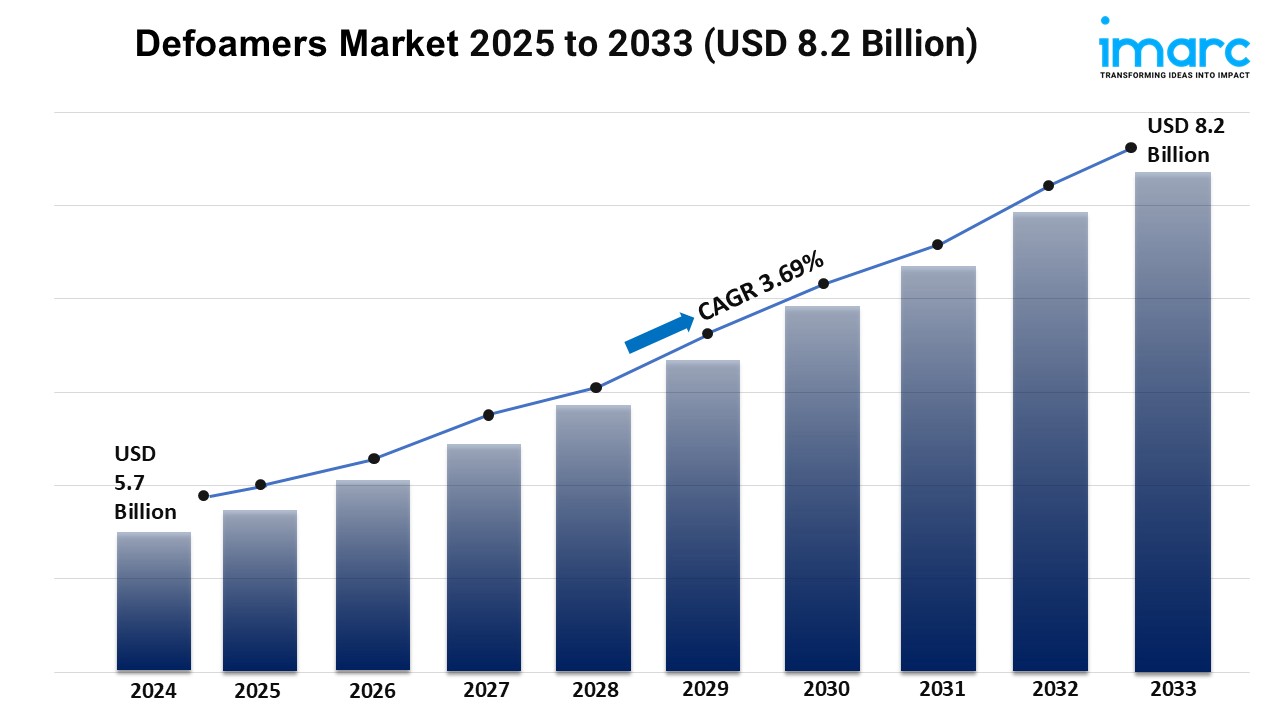 Content Gap Analysis – Find What Competitors Are Missing!
Content Gap Analysis – Find What Competitors Are Missing!
Manuka Honey Market 2025-2033: Riding the Wave of Wellness and Sustainability
Written by sujeet rai » Updated on: May 09th, 2025

Manuka honey, renowned for its unique health benefits and premium quality, has carved a significant niche in the global food and wellness industries. Derived from the nectar of the Manuka tree (Leptospermum scoparium), primarily found in New Zealand and parts of Australia, this monofloral honey is celebrated for its antibacterial, anti-inflammatory, and antioxidant properties. As consumer demand for natural and organic products surges, the Manuka honey market is experiencing robust growth, driven by its applications in food, pharmaceuticals, and cosmetics. This blog post provides an in-depth analysis of the Manuka honey market, exploring its size, share, trends, regulatory landscape, challenges, and future opportunities from 2025 to 2033, segmented by type, nature, distribution channel, and region.
Overview of the Manuka Honey Market
Manuka honey stands out in the global honey market due to its distinct composition, particularly its high levels of methylglyoxal (MGO), which contributes to its potent antibacterial properties. Unlike conventional honey, Manuka honey is graded using the Unique Manuka Factor (UMF) or MGO ratings, which measure its purity and potency. This premium honey is used in a variety of applications, from natural sweeteners in food and beverages to therapeutic ingredients in wound care and skincare products. The market's growth is fueled by increasing consumer awareness of health and wellness, a shift toward natural remedies, and the rising popularity of functional foods.
-
Unique Characteristics: Manuka honey contains MGO, a stable compound that enhances its antibacterial efficacy, making it a preferred choice for medicinal and therapeutic uses.
-
Global Appeal: Its reputation as a superfood has led to strong demand in regions like Asia-Pacific, North America, and Europe, where health-conscious consumers seek premium natural products.
-
Diverse Applications: Beyond food, Manuka honey is used in pharmaceuticals for wound healing and in cosmetics for its moisturizing and anti-inflammatory properties.
-
Premium Positioning: The limited geographic origin (New Zealand and Australia) and rigorous quality standards contribute to its high price point and elite market status.
-
Sustainability Focus: Ethical beekeeping practices and sustainable sourcing are gaining importance as consumers prioritize environmentally responsible products.
The Manuka honey market is poised for steady growth, driven by its versatility and alignment with global wellness trends. However, challenges such as supply constraints and counterfeit products necessitate strategic interventions to sustain its trajectory.
Market Size and Growth
The global Manuka honey market size was valued at USD 754.83 Million in 2024. Looking forward, IMARC Group estimates the market to reach USD 1,230.51 Million by 2033, exhibiting a CAGR of 5.30% during 2025-2033. Asia-Pacific currently dominates the market, holding a significant market share of over 30.3% in 2024. This growth is attributed to rising health awareness, increasing disposable incomes, and a cultural affinity for natural remedies in countries like China, Japan, and Australia. The market's expansion is further supported by the growing use of Manuka honey in diverse industries, including food and beverages, pharmaceuticals, and personal care.
-
Regional Dominance: Asia-Pacific’s leadership is driven by strong demand in China and Japan, where consumers value natural health products, and Australia, a key producer alongside New Zealand.
-
CAGR Insights: The projected 5.30% CAGR reflects steady demand for premium and organic products, with growth expected to accelerate in developing markets.
-
Segment Growth: The UMF 15+ segment holds the largest share (approximately 35.2% in 2024) due to its high potency and therapeutic applications.
-
Market Drivers: Increasing consumer preference for organic foods, rising health consciousness, and expanding e-commerce channels are key growth catalysts.
-
Economic Factors: Higher disposable incomes in developed regions like North America and Europe support premium product purchases, boosting market value.
The market’s upward trajectory is underpinned by consumer trends favoring natural and functional foods, but maintaining authenticity and supply chain efficiency remains critical to achieving projected growth.
Key Trends in the Manuka Honey Market
The Manuka honey market is evolving rapidly, shaped by consumer preferences, technological advancements, and industry innovations. Below are the key trends driving its growth from 2025 to 2033.
1. Rising Demand for Organic and Natural Products
Consumers are increasingly opting for organic Manuka honey due to concerns about chemical residues in conventional food products. The global organic food market, valued at USD 230.1 billion in 2024, is projected to grow significantly, reflecting a broader shift toward clean-label products. Organic Manuka honey, produced without synthetic pesticides or fertilizers, appeals to health-conscious buyers, particularly in Europe and North America.
Case Study: Wedderspoon, a leading Manuka honey brand, has capitalized on this trend by emphasizing its organic certifications and sustainable sourcing practices, gaining a loyal customer base in the U.S. and Canada.
2. Expansion in Skincare and Cosmetics
Manuka honey’s moisturizing, antibacterial, and anti-inflammatory properties have made it a sought-after ingredient in natural skincare products. Brands are incorporating it into face masks, creams, and serums, targeting consumers seeking chemical-free beauty solutions. The global natural cosmetics market’s growth complements this trend, as manufacturers innovate with Manuka-based formulations.
Example: Manuka Health’s 2024 launch of a skincare range featuring high-MGO Manuka honey highlights the product’s versatility, tapping into the premium beauty market.
3. Growth of E-Commerce Channels
The surge in online retail has transformed Manuka honey distribution, making it more accessible to global consumers. E-commerce platforms like Amazon and specialty health boutiques offer a wide range of UMF-graded products, supported by detailed product descriptions and customer reviews. This trend has been particularly pronounced in Asia-Pacific, where digital marketplaces dominate.
Statistic: E-commerce sales of Manuka honey are expected to grow significantly, driven by convenience and the ability to compare UMF ratings and prices online.
4. Focus on Functional Foods
Manuka honey is increasingly used as a natural sweetener in functional foods, such as yogurts, energy bars, and wellness shots, aligning with the demand for health-enhancing products. Its immune-boosting properties make it a popular ingredient in products marketed for post-pandemic health maintenance.
Example: Artisanal bakeries in Australia have introduced Manuka-infused sourdough breads, leveraging its rich flavor and health benefits to attract premium consumers.
5. Sustainability and Ethical Sourcing
Sustainability is a growing priority, with consumers favoring brands that prioritize ethical beekeeping and environmental stewardship. Producers like Comvita emphasize transparent supply chains and sustainable practices, resonating with eco-conscious buyers.
Case Study: Comvita’s partnership with New Zealand’s indigenous Māori communities to protect Manuka tree ecosystems showcases how sustainability can enhance brand value and market appeal.
6. Innovation in Product Offerings
Manufacturers are diversifying their portfolios with high-potency Manuka honey (e.g., UMF 20+) and innovative formats like honey-infused supplements and lozenges. These products cater to niche markets, such as athletes and seniors, seeking targeted health benefits.
Example: A New Zealand-based company recently launched a UMF 34+ Manuka honey with MGO 2050+, setting a new benchmark for therapeutic potency and attracting premium buyers.
These trends highlight the dynamic nature of the Manuka honey market, with innovation and consumer preferences shaping its growth trajectory.
Regulatory Landscape
The Manuka honey market operates under stringent regulations, particularly in New Zealand and Australia, to ensure product authenticity and quality. These regulations aim to protect consumers from counterfeit products and maintain the industry’s premium reputation.
1. New Zealand Regulations
New Zealand, the primary producer of Manuka honey, has implemented robust standards to safeguard its authenticity:
-
Unique Manuka Factor (UMF) Rating System: Managed by the UMF Honey Association, this system measures MGO, leptosperin, and other markers to verify Manuka honey’s purity and potency. Only certified producers can use the UMF label.
-
Manuka Honey Appellation Society: This body sets production and labeling standards, ensuring that only honey derived from Leptospermum scoparium is marketed as Manuka.
-
Ministry for Primary Industries (MPI) Guidelines: In 2018, MPI introduced a scientific definition for Manuka honey, requiring specific chemical markers to differentiate it from other honeys. Exporters must comply with these standards to label their products as Manuka.
Impact: These regulations have reduced the prevalence of counterfeit Manuka honey, boosting consumer trust and supporting premium pricing.
2. Australian Regulations
Australia, a secondary producer, has faced challenges in aligning its standards with New Zealand’s due to differing definitions of Manuka honey:
-
Australian Manuka Honey Association (AMHA): The AMHA promotes MGO-based grading and advocates for clear labeling to distinguish Australian Manuka from New Zealand’s.
-
Ongoing Disputes: Tensions between New Zealand and Australian producers over the term “Manuka” have led to calls for harmonized standards, as both countries compete for market share.
Example: In 2023, a legal dispute over the use of “Manuka” in labeling highlighted the need for international cooperation to protect the term’s integrity.
3. Global Standards
In international markets, regulations vary, with some regions lacking specific guidelines for Manuka honey:
-
European Union: The EU enforces general honey labeling laws, requiring clear origin and composition details but not specific Manuka standards.
-
United States: The FDA recognizes Manuka honey’s therapeutic uses (e.g., wound care) but does not mandate UMF or MGO labeling, leaving room for mislabeling risks.
-
Asia-Pacific: Countries like China and Japan rely on importer certifications, often referencing New Zealand’s UMF standards for authenticity.
Challenge: The lack of unified global standards increases the risk of adulteration, prompting brands to invest in traceability systems and third-party certifications.
4. Anti-Counterfeiting Measures
To combat fraud, producers are adopting blockchain technology and QR code labeling to provide consumers with verifiable product origins. These innovations enhance transparency and align with regulatory efforts to maintain market integrity.
Case Study: Oha Honey’s use of blockchain-based traceability has strengthened its position in the Asia-Pacific market, reassuring consumers of product authenticity.
The regulatory landscape is evolving to address authenticity and quality concerns, but global harmonization remains a critical need to sustain market growth.
Challenges in the Manuka Honey Market
Despite its promising outlook, the Manuka honey market faces several challenges that could impact its growth and sustainability.
1. Supply Constraints
Manuka honey’s limited geographic origin (New Zealand and parts of Australia) restricts production capacity. The Manuka tree blooms for only 2–6 weeks annually, and environmental factors like climate change and habitat loss threaten yields.
Impact: Supply shortages drive up prices, making Manuka honey less accessible to price-sensitive consumers and increasing reliance on imports in key markets.
2. Counterfeit Products and Adulteration
The high value of Manuka honey has led to widespread counterfeiting, with some products falsely labeled as Manuka or diluted with cheaper honeys. This erodes consumer trust and harms reputable brands.
Example: In 2018, a UK study found that several Manuka honey products sold in supermarkets failed authenticity tests, prompting calls for stricter regulations.
3. High Production Costs
Producing authentic Manuka honey is resource-intensive, requiring specialized beekeeping, rigorous testing, and compliance with UMF or MGO standards. These costs contribute to its premium pricing, limiting market penetration in developing regions.
Statistic: Manuka honey can cost 10–20 times more than conventional honey, deterring budget-conscious buyers.
4. Competition from Alternatives
Other natural sweeteners, such as agave syrup and stevia, compete with Manuka honey in the functional food market. Additionally, synthetic antibacterial products challenge its use in pharmaceuticals and cosmetics.
Example: Pharmaceutical companies are developing synthetic MGO-based compounds, potentially reducing reliance on natural Manuka honey for medical applications.
5. Regulatory Disparities
Differing standards between New Zealand and Australia, coupled with lax regulations in some import markets, create confusion and inconsistency in product labeling.
Impact: Consumers may struggle to identify authentic Manuka honey, leading to skepticism and reduced demand.
6. Environmental Pressures
Beekeeping practices face scrutiny for their environmental impact, including pesticide use and land management. Climate change also affects bee populations, threatening long-term supply stability.
Case Study: In 2022, New Zealand’s beekeepers reported lower yields due to adverse weather, highlighting the vulnerability of Manuka honey production to climate variability.
Addressing these challenges requires investment in technology, regulatory alignment, and sustainable practices to maintain consumer confidence and market growth.
Future Opportunities
The Manuka honey market is ripe with opportunities, driven by innovation, expanding applications, and growing global demand. Below are key areas for growth from 2025 to 2033.
1. Expansion into Emerging Markets
Developing regions like India, Southeast Asia, and Latin America present untapped potential due to rising disposable incomes and growing health awareness. Tailoring affordable UMF 5+ or 10+ products to these markets could broaden the consumer base.
Strategy: Partnering with local distributors and leveraging e-commerce platforms can enhance market penetration in these regions.
2. Innovation in Product Formats
Developing new Manuka honey-based products, such as supplements, ready-to-drink beverages, and single-serve sachets, can attract convenience-driven consumers. High-potency UMF 20+ products also cater to niche therapeutic markets.
Example: Manuka-infused wellness shots, combining honey with ingredients like turmeric and ginger, are gaining traction in North America.
3. Growth in Medical Applications
Ongoing research into Manuka honey’s therapeutic benefits, particularly in wound care and digestive health, could expand its use in pharmaceuticals. Clinical trials exploring its efficacy against antibiotic-resistant bacteria offer significant potential.
Case Study: In 2007, the U.S. FDA approved Manuka honey for wound therapy, paving the way for its integration into medical dressings and gels.
4. Sustainability Initiatives
Investing in sustainable beekeeping and habitat preservation can enhance brand reputation and appeal to eco-conscious consumers. Collaborations with indigenous communities and environmental organizations can further strengthen market positioning.
Opportunity: Certifications like “Bee Friendly” or “Carbon Neutral” can differentiate brands in a competitive market.
5. Digital Marketing and Consumer Education
Leveraging social media influencers, wellness blogs, and digital campaigns to educate consumers about Manuka honey’s benefits and authenticity can drive demand. Interactive tools, such as QR codes linking to product origins, enhance transparency.
Example: Manuka Health’s global campaign to raise awareness of MGO ratings has successfully boosted consumer engagement and sales.
6. Strategic Partnerships
Collaborations with food, cosmetic, and pharmaceutical companies can expand Manuka honey’s applications. Co-branded products, such as Manuka-infused skincare lines or functional foods, can attract new customer segments.
Case Study: Comvita’s partnership with a leading yogurt brand to launch Manuka honey-infused dairy products has driven sales in Europe.
These opportunities, if strategically pursued, can position the Manuka honey market for sustained growth and global prominence.
Conclusion
The Manuka honey market is on a promising growth path, driven by its unique health benefits, premium positioning, and alignment with global wellness trends. With a projected market value of USD 1,230.51 million by 2033, the industry is poised to capitalize on rising demand for natural and organic products, particularly in Asia-Pacific, North America, and Europe. Key trends, such as the growth of e-commerce, expansion in skincare applications, and focus on sustainability, are shaping its evolution. However, challenges like supply constraints, counterfeiting, and regulatory disparities require proactive solutions to maintain consumer trust and market integrity.
By leveraging opportunities in emerging markets, medical applications, and innovative product formats, stakeholders can unlock the market’s full potential. Regulatory harmonization and sustainable practices will be critical to ensuring long-term success. As the Manuka honey market continues to thrive, its role as a superfood and natural remedy will solidify, offering exciting prospects for producers, retailers, and consumers alike.
Note: IndiBlogHub features both user-submitted and editorial content. We do not verify third-party contributions. Read our Disclaimer and Privacy Policyfor details.
Copyright © 2019-2025 IndiBlogHub.com. All rights reserved. Hosted on DigitalOcean for fast, reliable performance.

















